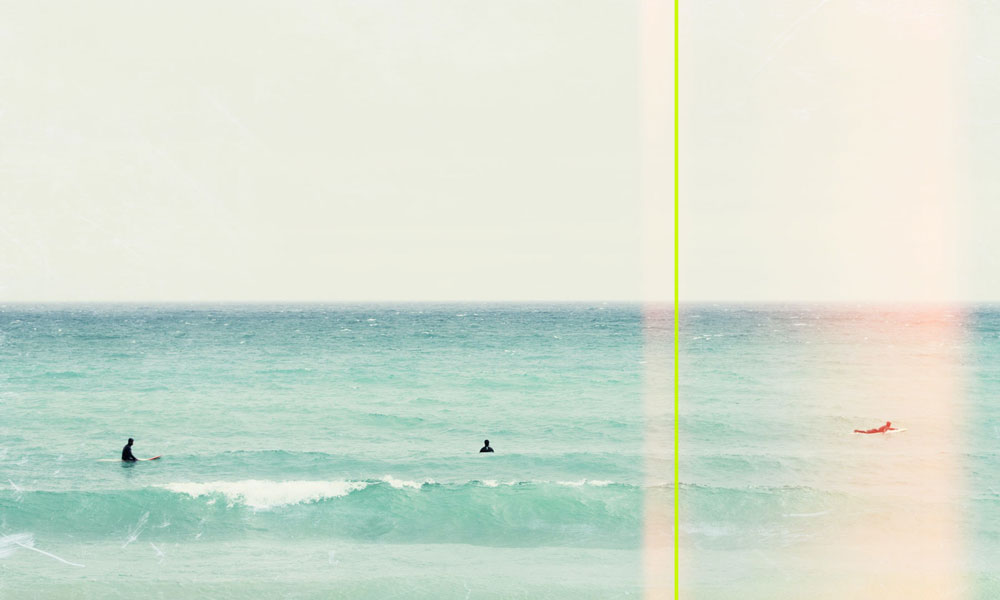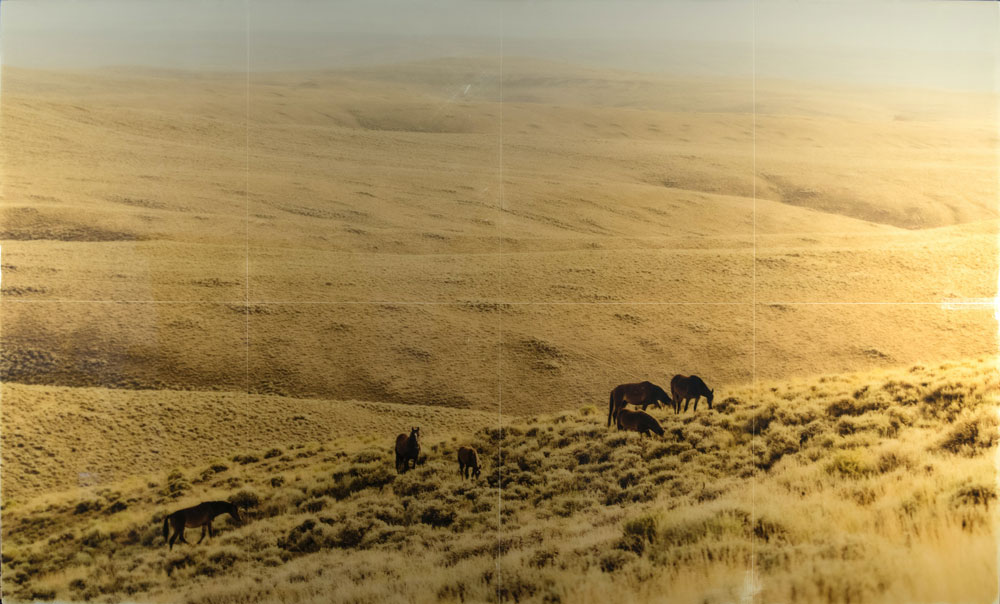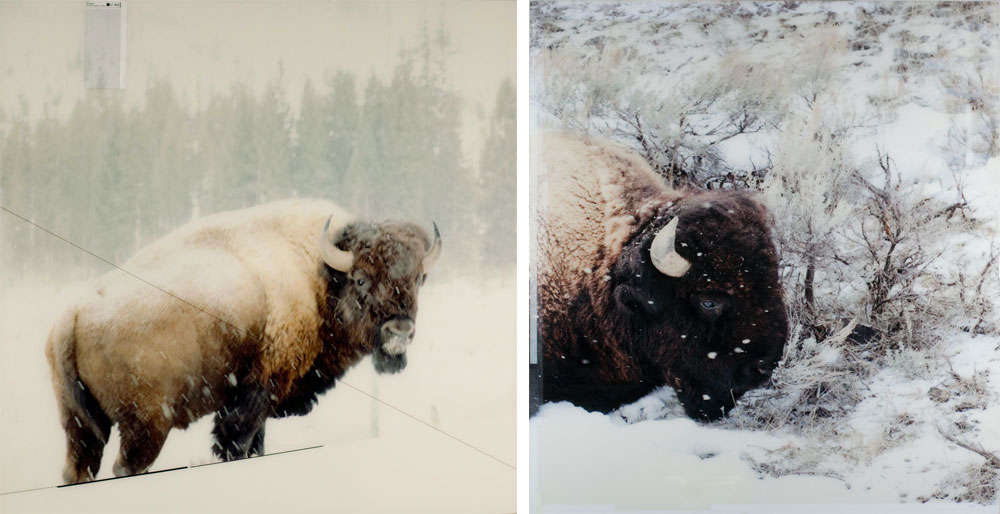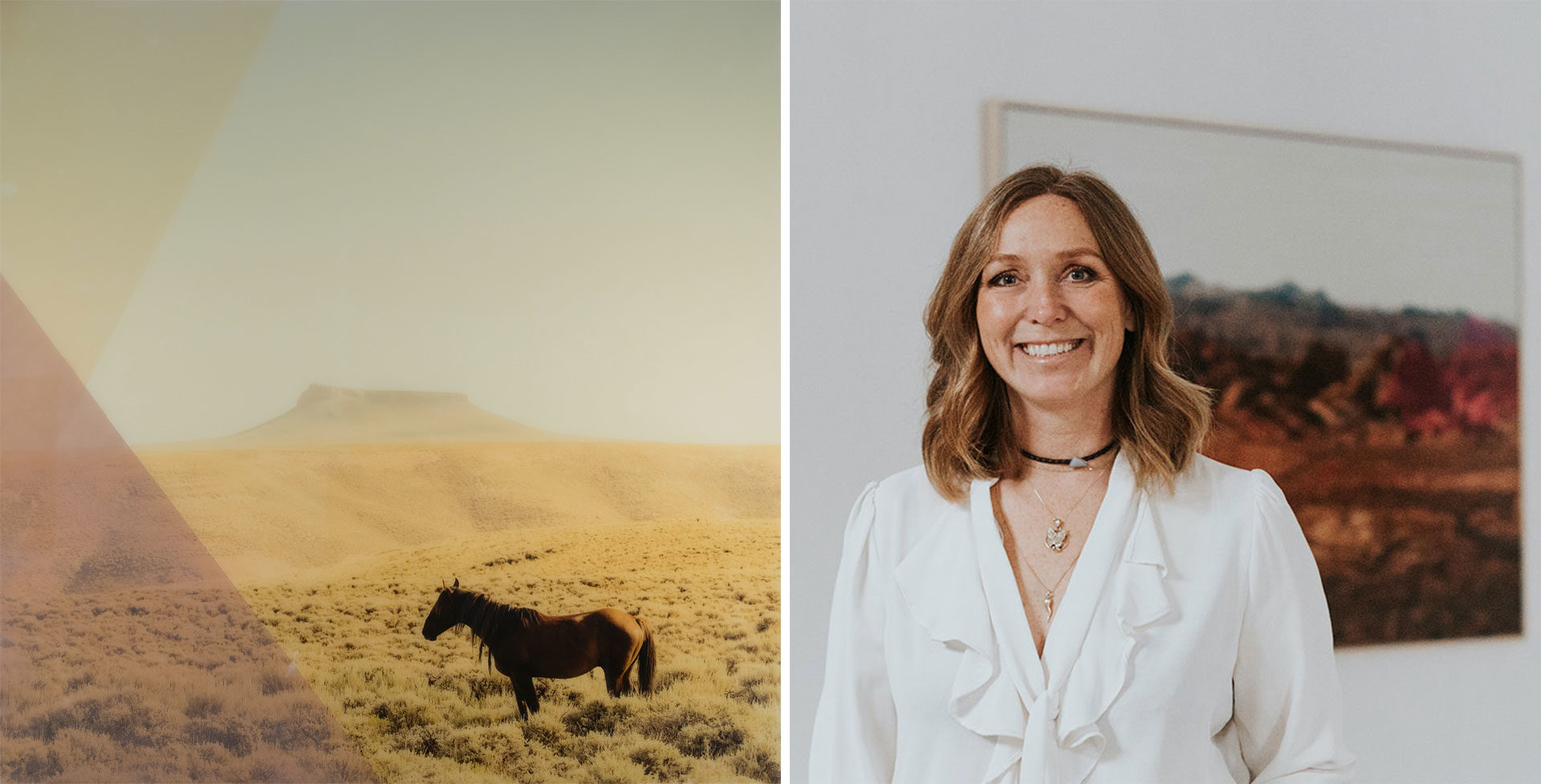Christine Flynn is a Toronto artist living in Prince Edward County working in photography and mixed media. Flynn is known for her landscape photography imbued with abstract elements, creating works of art that exist in between two mediums. The relationship between the photograph and abstract elements is nuanced: the abstractions do not distract from the photograph, but instead appear as if they are part of the image, enhancing it and adding depth.
Flynn composes images that hinge on nostalgia to ground the viewer. She presents photographs that embody the memory of a place, rather than a straight-forward depiction. In studio, Flynn’s captures are brought to life beyond the photograph. The abstract elements in her work are applied by hand—coats of paint and gold leaf are layered on top of an image—to create a photograph with the texture of a painting.
Christine Flynn received her BFA from Houghton College, western New York State in 1994. Her work has been exhibited extensively in galleries in Canada, the U.S. and Internationally.
Travel seems to be a big part of your life; were you a traveler growing up?
I was always interested in travel and the world. As soon as I was done with university, I went to Europe and I ended up living in Germany for a year, went back to New York for three years and then lived in London for a year.
I studied both photography and design in university so when I traveled in Europe, I did all film work in black and white, but didn’t really do anything with them (and even ended up losing all my film somehow). I ended up going into the design world and worked as a graphic designer and art director but I got really bored of it and picked up my camera again. My design background is one of the reasons where my mixed media comes from. There’s a lot of collage work and graphic elements as you’ve seen in my art. And that’s a merge of both of my worlds together.
It started there, and then I had old film from a trip I took out to Nevada, where I toured around the desert and took all these photos of deserted homes, old gas stations and towns. That was one of my first pieces, called “The Tanker.” That tanker had UPP 0719 numbers on it and I actually use those numbers throughout a lot of my pieces.

How much do you plan out your shots? Do you typically know the graphical elements you plan to include ahead of time?
When I am at the shoot, I know exactly what I want and what I want to get out of it. If it takes 500 shots to get the one shot that I’m thinking of, then I’ll do that. But at the same time, coming back in post-production and trying to edit through 500 images to find the one photo is very difficult.
If it’s a simple landscape, then I usually get it in three to five shots. If it’s wild horses, it’s going to take me a thousand shots. If it’s waves and surfers, it’s going to take a thousand shots.
Sometimes when I am taking the shots, I take time to think about the graphics I want to add to it. But, then again, that doesn’t always happen either. Sometimes I’ll stare at a shot for days or weeks or months and not know what I’m going to do until it comes to me.
Right now, I’m finding that my hardest part of the process is deciding which image is worthy for artwork and the graphic treatment and which ones are standalone pieces of work. I’ve actually been sitting on a shoot I did in January and I still haven’t decided what I want to be artwork or prints.
What makes a shot just a standalone versus something that works well with the graphic to you?
It’s really hard to define. I don’t know how to describe it. I just know it when I see it. Sometimes the composition of an image, I can’t see any additional outline. My graphic additions are only supposed to enhance the photo. It’s not supposed to take away from the photo. So, in some instances, it’s really subtle and with some images, it just speaks to me that this image doesn’t need anything else.

At Brush Creek, we placed one of your bison pieces. How did that series come about, and what is it like shooting living animals versus landscapes?
That was my first solo show series with a gallery that brought me on almost 10 years ago. My friend had a bison farm and I went and photographed them. I had three different bison shots from Ontario and people loved that so when we were brainstorming what my solo show should be, the idea came up to do North American bison. So I did Yellowstone, Jackson Hole, and Alberta in Canada. The piece at Brush Creek was shot in Yellowstone.
It was just an incredible experience to see them in their own habitat. I was on a snowmobile with a tour guide, just driving around, looking for the bison. The shoot in Alberta was actually the scarier part because I was by myself, walking through a national park in the spring trying to find the herd. I finally found the herd but they have a great sense of smell so as I’m trying to photograph them, I also had to keep my distance and be very respectful and aware that I could be charged at any time. Every time I went to shoot, I got stared down by the bulls. I slowly followed them and they just kept moving and by the end, I was walking through swamps trying to get the shot!
With the bison ones, all my graphics are fairly subtle. I used a lot of clear tape and a white paint and gold leaf on some of them and negative spaces.

COVID forced a lot of people to stay put and, since a lot of your work is inspired by your travels, did that change how you approached your work or your process?
It was hard thing not to travel and take new photos for new upcoming exhibitions or art shows. What I did was dove into some of my old archives and considered what I had that I could still work on that was new and relevant. Funny enough, one of my recent most popular, sold-out editions was “The Wave,” a big 44×80-inch shot from Big Sur that I took a year before lockdown. I thought I had mined that series already but I went back and looked at everything again during lockdown and thought, “What can I pull from this that I haven’t already shown and present as new work?” A couple new shots came out of it and ended up being really popular.
We also moved to the country in Prince Edward County after living in Toronto for 20 years, so I created a whole show based on my surroundings. I didn’t have to get on a plane; I didn’t have to go anywhere; I could just run around the county and shoot gorgeous sunsets and dunes and scenery from Lake Ontario.
I basically just shoot everything I love. And so at first, that was Lake Huron, where I grew up going to. I shot things that I like and things that were for me. I think that’s the whole basis of my photography, in that my clients relate to all my pieces. They buy what they find is nostalgic to them: “Oh, I need that shot in Portugal, because we grew up going there every summer.” “I lived in Malibu for five years and I want a memory from my surfing years.” The keyword is nostalgia and the thoughts that come up from viewing the work.

